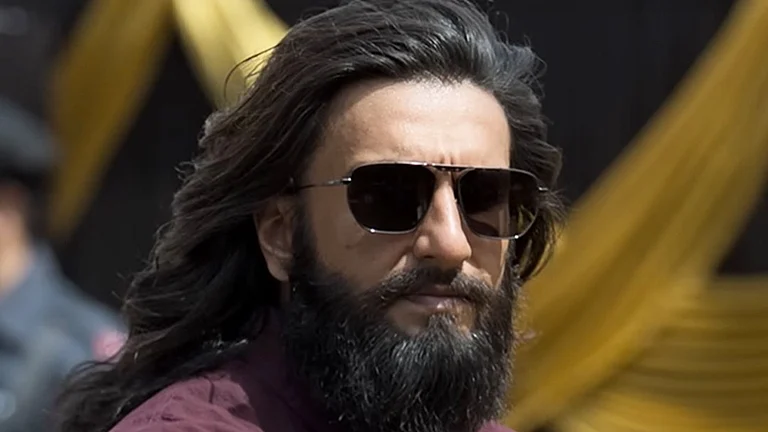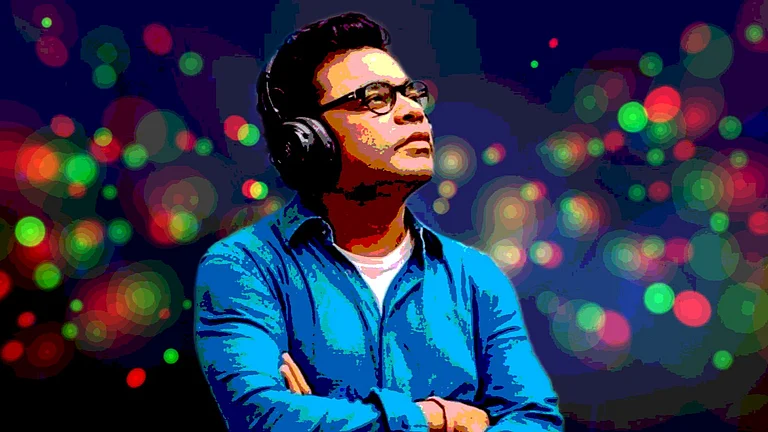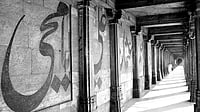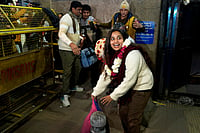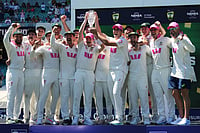In today’s India, where language policy fuels contentious debates from the imposition of Hindi in non-Hindi-speaking regions to the erosion of regional dialects in school curricula, one truth rings clear: language is never neutral. It is a carrier of culture, a marker of community, and a site of power. Behind every alphabet choice or vocabulary shift lies a battle over memory, belonging, and legitimacy. These present-day tensions echo a momentous literary and political upheaval in colonial North India in the late 19th century, a time when Hindi was reimagining itself and the future of its poetic tradition hung in the balance.
At the heart of this redefinition was a fundamental question: should Hindi poetry remain rooted in Braj Bhasha, the classical, melodious dialect suffused with Krishnaite bhakti and centuries of devotional lyricism? Or should it embrace Khari Boli, the emerging administrative and prose-oriented dialect of Delhi, reshaped into a standardized, modern literary idiom? This was not merely a stylistic dilemma, it was a civilizational one. And beneath the surface of this literary dispute churned deeper currents: cultural anxiety, religious contestation, and fear of linguistic absorption by Urdu.
The Braj-Khari Boli Conflict: Between Devotion and Modernity
Braj Bhasha, often referred to as Braj Bhakha, was the classical dialect of the Hindi heartland. As noted by Sir George Abraham Grierson in The Linguistic Survey of India, it was spoken across an expansive region including Mathura, Agra, Bharatpur, parts of Gwalior, and even the Tarai. More than a dialect, it was the poetic voice of bhakti—the Krishna-centric devotional movement that swept North India from the 15th century onward. The language was intimately tied to the religious and cultural life of Braj Mandal. Vallabhacharya’s propagation of the Radha-Krishna cult gave Braj Bhasha spiritual stature. His disciples, known as the Ashta Chhap poets, most notably Surdas, composed hymns in Braj that became integral to temple rituals. These compositions were not just art; they were acts of devotion. For centuries, Braj Bhasha remained the chosen vehicle for expressing divine love and emotional surrender.
Yet by the late 19th century, the winds were shifting. Ramchandra Shukla, a prominent figure in Hindi literary history, observed that that Khari Boli, the dialect of Delhi and its surrounding areas, had not traditionally been used for poetry. It was plain, functional, and widely spoken—but lacked the lyrical ornamentation of Braj. That changed with the publication Khari Boli Ka Padya in 1887 by Ayodhya Prasad Khatri, a significant literary voice from Bihar. Khatri boldly proposed Khari Boli as a legitimate poetic medium and introduced a classification of five types of Hindi, ranging from “Theth Hindi” (pure vernacular) to “Maulvi’s Hindi” (Urdu), outlining a complex landscape of linguistic hybridity. Crucially, he did not include Braj Bhasha within his vision of modern Hindi literature. For Khatri, modern Hindi had to evolve through Khari Boli, even at the cost of severing ties with Braj’s devotional past. This marked a significant turning point. While Khatri framed the shift as literary reform, it struck many as cultural betrayal.
The resulting controversy touched on multiple layers of identity. Many, like Radha Charan Goswami, a respected figure in Hindi literary circles, argued for a dichotomy between poetry and prose, akin to the Sanskrit–Prakrit divide in classical literature. Let Khari Boli serve prose and administrative needs, they argued, but keep Braj Bhasha as the sanctified medium for poetry. Goswami emphasized that the richness, rhythm, and emotional expressiveness of Braj Bhasha were unmatched. Why, he asked, should a language perfected over centuries suddenly be discarded? Pratap Narayan Mishra , known for his passionate invocation of "Hindi, Hindu, Hindustan", supported this view, noting that both dialects emerged from the same linguistic soil—Sanskrit. In his eyes, treating Khari Boli and Braj Bhasha as rivals was counterproductive. He saw them as complementary tools, each suited to different genres, and symbolic of Hindi’s layered, pluralistic heritage.
On the other side of the debate stood the partisans of Khari Boli, including Shridhar Pathak, who, who advocated for Khari Boli’s supremacy based on practicality and reach. They argued that while Braj Bhasha had cultural depth, it was regionally confined and increasingly unintelligible to the broader Hindi-speaking public. Khari Boli, by contrast, had gained ground across schools, newspapers, and bureaucratic institutions. For Pathak, language reform was essential to nation-building. Pathak also noted the inconsistencies and regional variations within Braj Bhasha, which complicated efforts to standardize it. He maintained that accessibility, not sentimentality, should guide literary language policy. While acknowledging Braj’s contributions, he insisted that Khari Boli’s simplicity and clarity made it better suited to the modern age.
Urdu as the Shadow Adversary
But beneath this linguistic debate lurked a more charged fear—the potential infiltration of Urdu. Goswami articulated this anxiety clearly: if poets began composing in Khari Boli, they might unwittingly mimic Urdu’s style, rhythm, and vocabulary. The linguistic closeness of Khari Boli and Urdu made this risk all too real. Goswami feared that Urdu, already dominant in courtly literature and elite circles, would eventually absorb Hindi poetry if Khari Boli became the norm. His fears were not unfounded. Under British rule, Urdu enjoyed official status in large parts of North India, and its cultural prestige was significant. Many Hindu reformers saw the promotion of Sanskritized Hindi as a counterbalance to Urdu’s dominance. For them, safeguarding Braj Bhasha was not just about preserving a dialect; it was about protecting Hindu cultural identity from what they saw as “foreign” (Persian and Arabic) influence.
Language was quickly becoming a proxy for religious and political identity. Balkrishna Bhatt’s emotive defense of Braj Bhasha in Hindi Pradeep framed Hindi poetry as a sacred goddess, “Padyamayi Saraswati”, that must not be tainted by “Yavani” (foreign or Muslim) words. Babu Krishan Das went further, suggesting that Hindus turned toward Braj precisely because Muslims had adopted Khari Boli as the basis for Urdu. Even within religious sects like Vallabhacharya’s, the use of Braj Bhasha was seen as spiritually appropriate, while Urdu (and even Khari Boli) were considered unsuitable for worship. These distinctions were more than stylistic—they reflected deeply held beliefs about linguistic purity, sacredness, and community boundaries.
Interestingly, both sides of the debate—Braj loyalists and Khari Boli reformers—shared a fundamental concern: how to protect Hindi from being overtaken by Urdu. Their disagreement lay in strategy. The Braj camp sought insulation through tradition and spiritual authority. The Khari Boli camp believed in proactive modernization, trusting that a strong, standardized Hindi could resist Urdu’s influence through strength, not seclusion. Pathak maintained that as long as Hindi advocates were vigilant and committed, Urdu would not gain ground. He dismissed the need for legislative safeguards, arguing that cultural conviction would be enough. But Goswami remained skeptical. With Urdu already seeping into prose, he asked, what assurance was there that it wouldn’t soon dominate poetry?
Echoes of the Past, Reverberations in the Present
This late 19th-century debate—at once literary, political, and religious—offers a mirror to contemporary India. Then, as now, language was identity. Dialect was not just a phonetic difference; it was a cultural allegiance. Braj Bhasha symbolized devotional continuity and Hindu self-assertion; Khari Boli offered functional modernity but risked ideological dilution. Both sides feared erasure—but imagined different paths to survival.
Today, the ghosts of this debate continue to haunt Indian language policy. The homogenizing thrust of Hindi nationalism often sidelines dialects like Braj, Awadhi, Bhojpuri, and Maithili, reducing them to “impure” variants. Urdu, meanwhile, is cast as suspect, criminalized, or erased from signage, even as it continues to shape Indian popular culture. In classrooms and textbooks, in literature and bureaucracy, the choices we make about language are rarely innocent. They remain saturated with power.
The Khari Boli–Braj Bhasha controversy teaches us that languages are not just means of communication—they are repositories of memory, religion, resistance, and aspiration. As we navigate present-day battles over official languages, scripts, and pedagogies, we must ask not just what is practical or efficient, but what is just, what is plural, and what is worth remembering.
(Mohd Kashif is a Senior Research Fellow at Jamia Millia Islamia, New Delhi and teaches History as Guest Faculty at Bharati College, University of Delhi. Ismail Salahuddin is a writer and researcher based in Delhi, focusing on Muslim identity, Communal Politics, Caste, and the politics of knowledge. Social Exclusion & Inclusive Policy at Jamia Millia Islamia)







